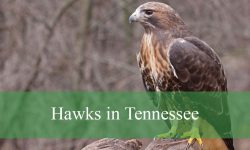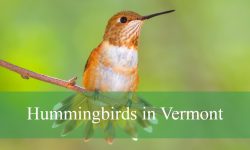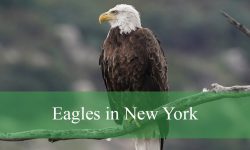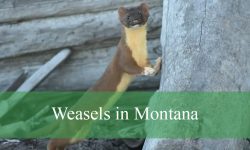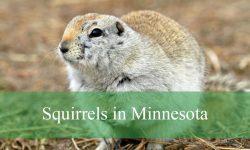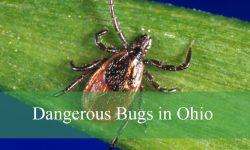Vermont’s landscapes are filled with the lively presence of squirrels, from quiet forests to bustling town parks. These energetic mammals are a familiar part of daily life, easily recognized by their bushy tails and constant foraging.
The state hosts five different squirrel species, each with its own traits, behaviors, and preferred habitats. From the feisty Red Squirrel to the elusive Flying Squirrel, Vermont’s diversity makes wildlife watching more rewarding.
Learning about these species highlights their importance to the ecosystem and helps in recognizing them in the wild. Exploring Vermont’s woodlands or observing feeders at home often brings these fascinating animals into view.
Different Types of Squirrels in Vermont
Eastern Gray Squirrel (Sciurus carolinensis)
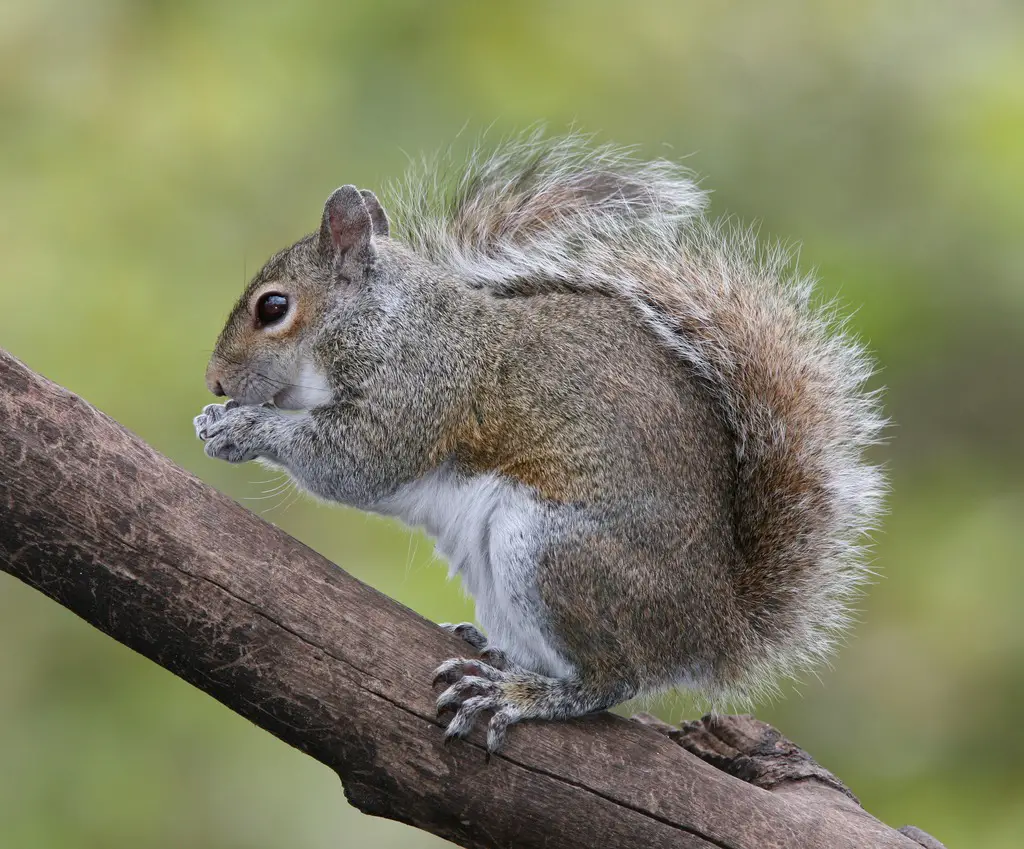
The Eastern Gray Squirrel is the most common tree squirrel in Vermont, instantly recognizable by its silver-gray fur and large bushy tail. Its body length typically ranges from 9 to 12 inches, with the tail adding another 7 to 10 inches. Weighing around 1 to 1.5 pounds, it is one of the larger squirrel species in the region. This squirrel is highly adaptable and thrives in both urban parks and rural woodlands, making it a familiar sight to many Vermonters.
These squirrels are primarily diurnal, being most active in the early morning and late afternoon. They spend much of their time foraging for food, which mainly includes acorns, hickory nuts, seeds, buds, and fruits. In autumn, Eastern Gray Squirrels are known for their habit of caching nuts in multiple locations, a survival strategy that helps them endure the long Vermont winters. Interestingly, many of these cached nuts are never retrieved, which contributes to forest regeneration.
Behaviorally, they are intelligent and resourceful. They often display problem-solving skills when raiding bird feeders or navigating obstacles in search of food. Gray squirrels communicate with tail flicks and a variety of vocalizations, ranging from warning barks to squeaks. Their sharp eyesight and agility make them excellent climbers and leapers, often seen darting across branches or even power lines with ease.
Reproduction occurs twice a year, once in late winter and again in mid-summer. Females give birth to litters of two to six young after a gestation period of about 44 days. The young are born hairless and blind, requiring several weeks of care in leaf-lined nests built high in trees. By around three months, the juveniles are ready to leave the nest and begin independent foraging.
In Vermont, Eastern Gray Squirrels play an important ecological role. By dispersing seeds and unintentionally planting trees through their caching habits, they help maintain healthy forest ecosystems. Their presence also supports predators such as hawks, owls, and foxes, forming a vital part of the local food web.
Red Squirrel (Tamiasciurus hudsonicus)
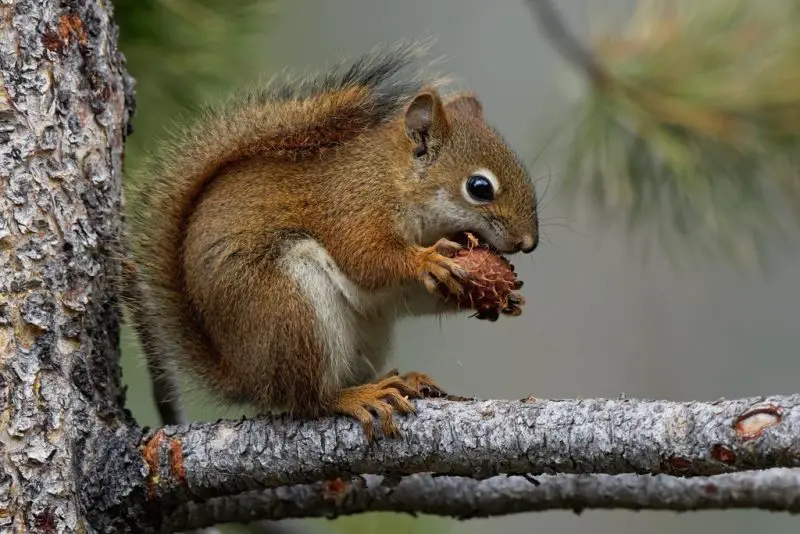
The Red Squirrel, also known as the Pine Squirrel, is smaller than the Eastern Gray Squirrel and is one of the most vocal squirrel species in Vermont. Adults measure about 7 to 9 inches in body length with a tail of 4 to 6 inches, weighing between 7 and 10 ounces. Their reddish-brown fur, white underbelly, and distinctive eye ring make them easy to identify. They are commonly found in coniferous and mixed forests, especially areas rich in spruce and pine.
Unlike the Gray Squirrel, the Red Squirrel does not scatter-hoard nuts. Instead, it practices “larder hoarding,” creating large food caches, often at the base of trees or in hollow logs. These caches, called middens, can contain thousands of pine cones, which provide food throughout the harsh Vermont winter. This unique storage strategy ensures their survival but also makes them highly territorial and aggressive in defending their caches.
Red Squirrels are energetic and feisty, often chasing away larger squirrels or birds that encroach on their territory. They are famous for their loud, chattering calls, which serve as warning signals against intruders. Despite their small size, they are fearless defenders of their food stores and nesting sites, making them one of the most combative rodents in the state.
Breeding occurs in early spring and sometimes again in late summer. After a gestation period of about 35 days, the female gives birth to litters of three to seven young. The kits are born blind and hairless but develop quickly, leaving the nest by around six weeks of age. Their survival is strongly tied to the success of food caching in the previous season.
In the Vermont ecosystem, Red Squirrels influence forest composition by controlling the spread of certain tree species, especially conifers. Their seed predation helps balance tree populations, and their food middens provide shelter and resources for other small animals. They are also a favorite prey for weasels, hawks, and owls, keeping the predator-prey cycle intact.
Eastern Fox Squirrel (Sciurus niger)
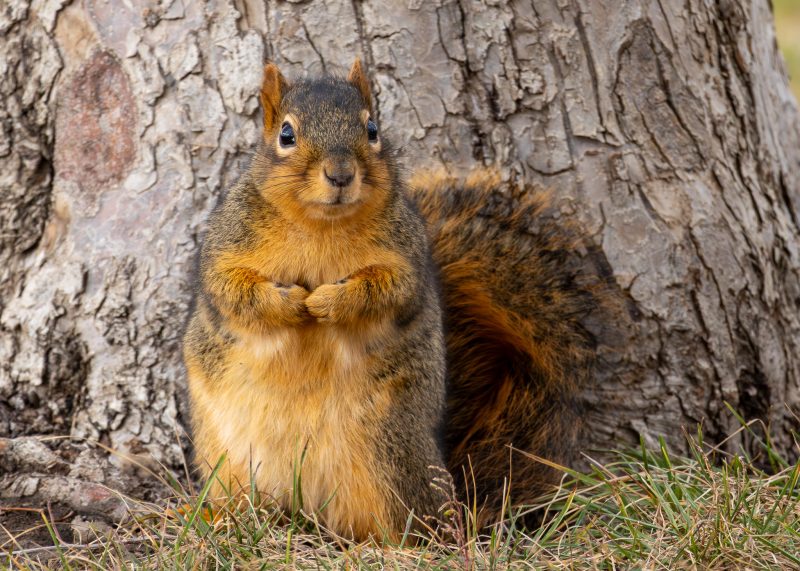
The Eastern Fox Squirrel is the largest tree squirrel found in North America, though in Vermont it is much less common than Gray or Red Squirrels. Adults can measure 10 to 15 inches in body length with tails of 10 to 13 inches, weighing between 1.5 to 2.5 pounds. Their fur color varies from grayish-brown to rusty-red, with a pale orange belly, making them easy to distinguish from other local species. They prefer open woodlands, farmlands, and forest edges rather than dense forests.
Fox Squirrels are primarily ground-foragers, often seen digging in fields or grassy areas for acorns, walnuts, seeds, and fungi. They also consume insects, buds, and occasionally bird eggs. Like Gray Squirrels, they practice scatter-hoarding, burying nuts in shallow soil. These forgotten caches contribute significantly to the growth of new trees, aiding natural forest regeneration.
They are less agile climbers than Gray Squirrels but compensate with strong running and digging abilities. Fox Squirrels are often solitary and less vocal compared to Red Squirrels. Their communication includes clucking sounds, barks, and tail movements used to signal alarm or establish dominance. Their large size and adaptability allow them to thrive in human-altered landscapes, although in Vermont they are observed more in the southern and western parts of the state.
Breeding takes place twice a year, similar to Gray Squirrels, with litters of two to four young. Nests are usually built in tree cavities or leaf nests high in oaks and maples. The young remain dependent on their mother for about two months before venturing out. Because of their size, they face fewer predators, though hawks, coyotes, and humans remain their primary threats.
Although less widespread in Vermont, Fox Squirrels contribute to biodiversity by expanding the ecological range of squirrels in the state. Their ground-foraging habits influence soil aeration, and their seed dispersal activities help sustain oak and hickory populations. As their range slowly expands, sightings in Vermont may become more frequent, especially in rural farmlands.
Northern Flying Squirrel (Glaucomys sabrinus)
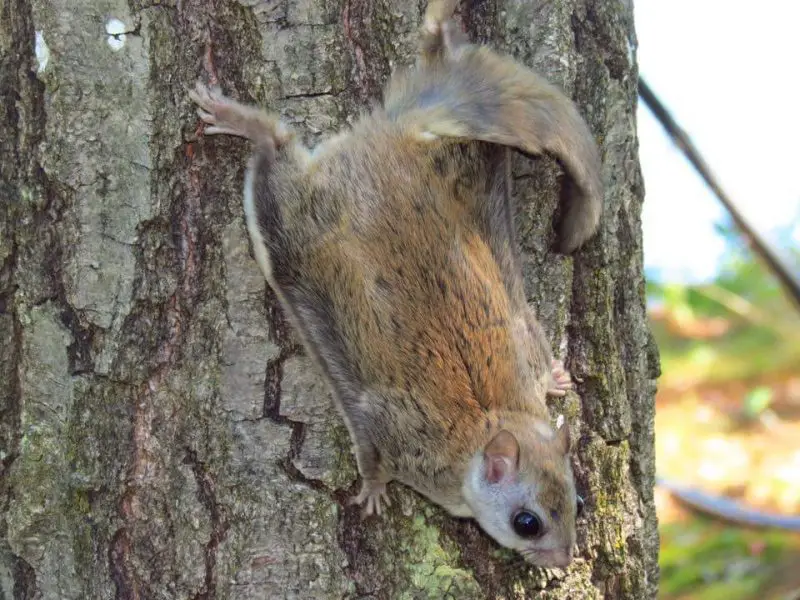
The Northern Flying Squirrel is one of the most fascinating small mammals in Vermont. Measuring about 9 to 14 inches in length, including its flattened tail, it weighs only 3 to 5 ounces. Its soft brown fur, white belly, and large dark eyes make it easily recognizable. Unlike tree squirrels that are active in the day, Northern Flying Squirrels are nocturnal, which makes them harder to spot. They inhabit mature forests, especially spruce-fir and mixed woodlands, where they can glide from tree to tree in search of food.
These squirrels are not capable of powered flight like birds or bats. Instead, they glide using a skin membrane called the patagium that stretches between their forelimbs and hindlimbs. With this adaptation, they can cover distances of up to 150 feet in a single glide, steering with their tail to navigate obstacles. This unique ability helps them avoid predators and efficiently forage across wide areas.
Their diet is diverse and includes fungi, lichens, seeds, nuts, berries, and insects. Northern Flying Squirrels play a crucial role in forest ecosystems because they spread the spores of truffle-like fungi, which help trees absorb nutrients through symbiotic mycorrhizal relationships. This ecological function makes them an essential link in maintaining healthy Vermont forests.
Breeding usually occurs once a year in late spring or early summer. After a gestation period of about 37 to 42 days, females give birth to two to six young. The kits are born helpless and remain in the nest for about five weeks before they develop enough to start gliding. Nests are typically built in tree cavities lined with moss, bark, or leaves, and sometimes in abandoned woodpecker holes.
Although widespread across northern Vermont, Northern Flying Squirrels face threats from habitat loss and climate change. They require old-growth or mature forests with continuous canopy cover to thrive. Their nocturnal and secretive habits make them difficult to observe, but patient wildlife enthusiasts with red-filtered lights may spot them gliding through the trees on quiet nights.
Southern Flying Squirrel (Glaucomys volans)
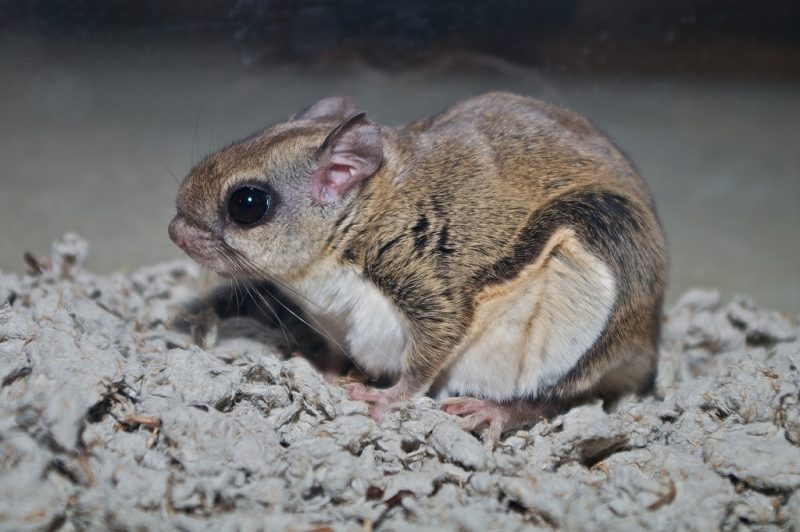
The Southern Flying Squirrel is slightly smaller than its northern cousin and is also found in Vermont, though less commonly in northern areas. Adults measure 8 to 10 inches in total length, weighing just 2 to 3 ounces, making them the smallest tree squirrel species in the state. They have soft gray-brown fur above, white underparts, and large black eyes adapted for night vision. Their presence often goes unnoticed because of their nocturnal habits, but they are more abundant than many people realize.
Like the Northern Flying Squirrel, the Southern Flying Squirrel uses its patagium to glide between trees. Their glides are usually shorter, averaging 20 to 60 feet, but still allow them to cover wide ranges quickly. These gliding abilities help them forage efficiently and avoid predators such as owls, snakes, and raccoons. They are extremely agile and can change direction mid-glide, landing precisely on their target tree.
Their diet includes acorns, hickory nuts, seeds, fruits, insects, and even bird eggs on occasion. Unlike Northern Flying Squirrels, they do not rely heavily on fungi but are still important seed dispersers. In fall, they collect and store food in tree cavities or underground caches to ensure survival during the cold months. Their feeding habits strongly influence tree regeneration in hardwood forests.
Southern Flying Squirrels breed twice a year, in spring and late summer. After about 40 days of gestation, females give birth to litters of two to six young. The kits remain in the nest for several weeks before they are capable of gliding. Nests are typically located in tree holes, but they will also occupy nest boxes if available, which makes them more visible to people who provide wildlife housing.
In Vermont, their range overlaps with Northern Flying Squirrels, but Southern Flying Squirrels tend to be more common in southern and lower elevation forests with plenty of hardwoods. They are social creatures and often share nests with multiple individuals during the winter to conserve heat. Their presence is an indicator of healthy woodland habitats, and their gliding displays are a remarkable sight for those fortunate enough to witness them.
Best Time and Place to See Squirrels in Vermont
Squirrels are active throughout the year in Vermont, but the best time to observe them depends on the species. Tree squirrels such as the Eastern Gray, Red, and Eastern Fox Squirrels are most visible during the early morning and late afternoon hours, when they are busy foraging for food. During autumn, their activity peaks as they gather and cache nuts, making this season one of the easiest times to watch them. Winter sightings are also common, especially on milder days when squirrels leave their nests to look for food.
Flying squirrels, on the other hand, are nocturnal and require more patience to observe. The best chances of spotting Northern and Southern Flying Squirrels come at night in mature forests, especially if you use a red-filtered flashlight to minimize disturbance. They are often active on calm nights with little wind, gliding from tree to tree in search of food. Wildlife enthusiasts sometimes set up nest boxes in wooded areas, which increases opportunities to see them.
In terms of locations, Vermont’s state parks, nature preserves, and mixed woodlands provide excellent habitats for squirrel watching. Eastern Gray and Red Squirrels are abundant in both rural forests and urban areas such as Burlington and Montpelier, where they are frequent visitors to backyards and parks. Flying squirrels are best observed in more remote areas with continuous canopy cover, such as the Green Mountain National Forest. Overall, Vermont’s diverse habitats provide plenty of opportunities to see these lively mammals year-round.
FAQs About Squirrels in Vermont
Are squirrels active year-round in Vermont?
Yes, squirrels remain active all year, though their behavior changes with the seasons. In winter, they spend more time in their nests but still emerge during warmer daylight hours or, in the case of flying squirrels, during mild nights.
Which squirrel species is the most common in Vermont?
The Eastern Gray Squirrel is the most widespread and abundant species in Vermont. It thrives in both urban and rural environments, making it the squirrel most people encounter on a daily basis.
How can I tell the difference between Red and Gray Squirrels?
Red Squirrels are smaller, have reddish-brown fur with a white belly, and are known for their loud chattering calls. Gray Squirrels are larger, with grayish fur and a bushy tail, and are generally less vocal than Reds.
Do flying squirrels really fly?
Flying squirrels do not truly fly like birds or bats. Instead, they glide using a skin membrane called the patagium that stretches between their front and back legs. This allows them to travel impressive distances from tree to tree.
What role do squirrels play in Vermont’s ecosystem?
Squirrels are vital to forest regeneration because of their nut-caching behavior, which helps plant new trees. Flying squirrels also play a key role by spreading fungal spores that assist trees in nutrient absorption. They are also an important food source for predators like hawks, owls, and foxes.

